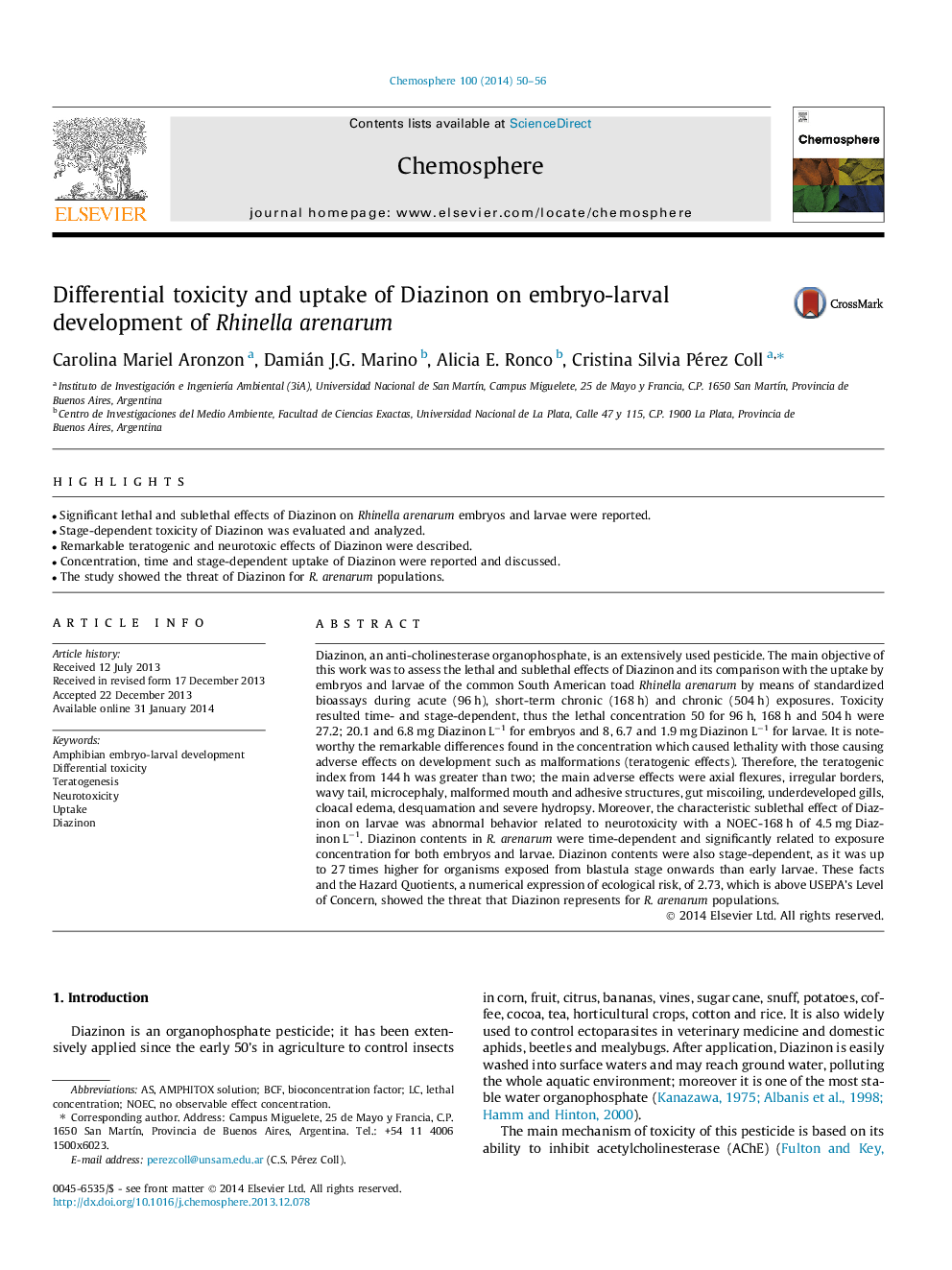| Article ID | Journal | Published Year | Pages | File Type |
|---|---|---|---|---|
| 6309454 | Chemosphere | 2014 | 7 Pages |
Abstract
Diazinon, an anti-cholinesterase organophosphate, is an extensively used pesticide. The main objective of this work was to assess the lethal and sublethal effects of Diazinon and its comparison with the uptake by embryos and larvae of the common South American toad Rhinella arenarum by means of standardized bioassays during acute (96 h), short-term chronic (168 h) and chronic (504 h) exposures. Toxicity resulted time- and stage-dependent, thus the lethal concentration 50 for 96 h, 168 h and 504 h were 27.2; 20.1 and 6.8 mg Diazinon Lâ1 for embryos and 8, 6.7 and 1.9 mg Diazinon Lâ1 for larvae. It is noteworthy the remarkable differences found in the concentration which caused lethality with those causing adverse effects on development such as malformations (teratogenic effects). Therefore, the teratogenic index from 144 h was greater than two; the main adverse effects were axial flexures, irregular borders, wavy tail, microcephaly, malformed mouth and adhesive structures, gut miscoiling, underdeveloped gills, cloacal edema, desquamation and severe hydropsy. Moreover, the characteristic sublethal effect of Diazinon on larvae was abnormal behavior related to neurotoxicity with a NOEC-168 h of 4.5 mg Diazinon Lâ1. Diazinon contents in R. arenarum were time-dependent and significantly related to exposure concentration for both embryos and larvae. Diazinon contents were also stage-dependent, as it was up to 27 times higher for organisms exposed from blastula stage onwards than early larvae. These facts and the Hazard Quotients, a numerical expression of ecological risk, of 2.73, which is above USEPA's Level of Concern, showed the threat that Diazinon represents for R. arenarum populations.
Keywords
Related Topics
Life Sciences
Environmental Science
Environmental Chemistry
Authors
Carolina Mariel Aronzon, Damián J.G. Marino, Alicia E. Ronco, Cristina Silvia Pérez Coll,
